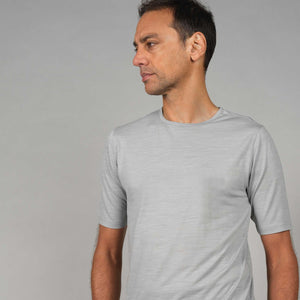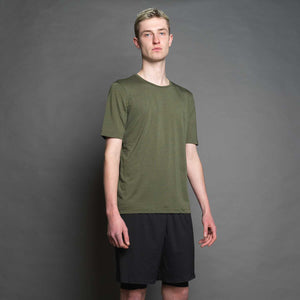Material matters
Sustainable performance
Merino
Merino wool is natural, renewable and biodegradable. It is also anti-bacterial, non-itchy, warm when it is cold and cooling when it is warm.
All Merino is not equal, like any fibre it can be treated in different ways and combined with other fibres to improve performance. We’ve engineered each of our Merino fabrics for optimal performance in sport and ensured that all of our wool is sourced from farms which have the highest standards of animal welfare.
We are certified by global authority Woolmark for the quality of our Merino products and will continue to ensure the Merino we procure achieves the highest ethical standards.
The Merino + Carbon composite we use in most of our garments is in a league of its own when it comes to regulating body temperature. This incredible fabric technology is not a treatment, but uses active carbon particles embedded within the fibre to capture and release moisture vapour before it turns to sweat, doubling the drying speed of our Merino.
The carbon particles are permanently embedded, meaning long-lasting performance while active carbon particles absorb and capture odour molecules to ensure the garments don’t smell.

Re-use, recycle
Our 100% recycled fabric is produced from post-consumer PET bottles, reclaimed in a non-chemical process. The material is class-leading in breathability and protection with its microfibre structure. So not only does it actively utilise waste, it makes high quality, performance apparel. For every jersey made, we save 12 bottles from landfill.
Once the bottles are collected, they are sorted, cleaned and crushed. The polymers are then broken down before being reformed. The renewed polymers are then melted and spun into the recycled fibres before being given a hydrophilic treatment for the best breathability and fast moisture management.
ashmei is also dedicated to reducing waste in our factory to minimise our environmental impact. Our limited edition collections use leftover material and accessories to produce small runs of apparel manufactured to our usual high standards while ensuring we throw away as little as possible.




